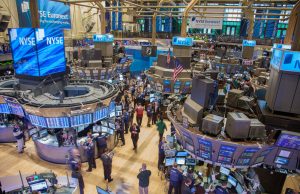In the landscape of the American economy, a tale of two contrasting realities emerges. Picture John, a tech investor in Silicon Valley, whose wealth has multiplied through savvy stock market investments. Contrast this with Maria, a school teacher in rural Alabama, struggling with stagnant wages and rising living costs. This dichotomy illustrates a deepening wealth gap in the United States, a phenomenon that has been intensifying over decades.
Historically, wealth inequality in America has seen a sharp rise, particularly from the late 20th century. The Gini coefficient, a measure of inequality, and the top wealth shares reveal an alarming trend: a steady increase in wealth concentration among the top earners, with the top 10% holding a staggering 76% of wealth by 2013. In contrast, the bottom 50% scraped by with a mere 1% of the nation’s wealth. This disparity has only widened in the recent post-pandemic era, where the top 1% have seen their wealth and income shares surge, leaving behind the bottom 40% despite their modest gains.
Simultaneously, the stock market presents a beacon of opportunity for those with access and knowledge. Historically, the market has skewed towards positive returns, with long-term investments averaging a 9.56% annual return over nearly two centuries. This potential for wealth growth, however, remains a distant dream for many like Maria, who are barred from these opportunities due to socio-economic constraints.
Government policies, while intended to stabilize and stimulate the economy, often inadvertently contribute to this widening gap. The fiscal response to the recent pandemic, for instance, boosted asset values significantly, further enriching those already invested in the market. Yet, the same policies have done little to bridge the wealth divide.
This report delves into the complexities of these two parallel economic paths. We aim to unravel the factors driving this divide and explore the stock market opportunities available for those who can navigate this intricate landscape. The year 2024 stands as a pivotal moment, where these trends will likely intensify, signaling both challenges and opportunities within the U.S. economy.
The Expanding Wealth Gap in America
The widening wealth gap in America is not a recent phenomenon but rather a culmination of decades-long trends, deeply rooted in a combination of policy decisions, technological advancements, and global economic shifts. As we trace back to the late 20th century, the disparity becomes evident, with the top 10% of families holding an overwhelming majority of the nation’s wealth by 2013, starkly contrasted against the meager share held by the bottom 50%.
In the current landscape, this gap is perpetuated and exacerbated by several critical factors. Advancements in technology and automation have created a rift, heavily favoring those with access to these modern tools, often at the expense of traditional labor-intensive jobs. Globalization further compounds this issue, creating immense wealth for those well-positioned in the global market, thus widening the gap between the global economic elite and local workers. Additionally, policy decisions, including tax policies, financial deregulation, and government spending, often favor the wealthy, further deepening income and wealth disparities.
Looking ahead to 2024, these trends are not only expected to continue but also potentially accelerate. The relentless march of automation, the persisting trends in globalization, and the current trajectory of policy decisions are likely to further concentrate wealth at the top echelons of society. This projection aligns with recent data, which shows an increase in the share of household net worth held by the top 1%, rising to about 26.5% by mid-2021.
The wealth gap in the United States, already a matter of significant concern, is on a path to further expansion by 2024. This ongoing trend, driven by a complex interplay of technological progress, global economic trends, and policy decisions, appears set to favor the wealthiest, leaving a substantial portion of the population increasingly behind.
The Stock Market: A Venue of Prosperity for the Informed Investor
The stock market, historically a bastion of wealth growth, stands as a striking contrast to the expanding wealth gap in America. For the informed and opportunistic investor, it presents a landscape ripe with potential. Historically, U.S. equity returns have demonstrated a trend of positive performance, with long-term investments yielding an average annual return of 9.56% from 1825 to 2019. This positive skew in the market has been a consistent feature over nearly two centuries, underscoring the potential for substantial wealth accumulation through strategic investment.
In recent years, especially following the 2008 financial crisis, the stock market has showcased its resilience and potential for rapid recovery. The crisis led to one of the largest equity losses to date, but the subsequent rebound in 2009, with stocks climbing almost 27%, highlighted the market’s ability to recover and offer lucrative returns in the aftermath of economic downturns. This resilience was further exemplified in the post-pandemic era, where, despite initial setbacks, the market recovered to new heights, bolstered by government stimulus and policy responses.
Moreover, the role of technology and innovation in the stock market cannot be overstated. Advancements in technology and the emergence of new business models have continually created novel investment opportunities, allowing savvy investors to capitalize on trends and innovations ahead of the curve. This aspect of the market is particularly significant in the modern era, where technology-driven companies often lead market growth and provide substantial returns.
However, it’s important to note that stock market investing is not without its risks. High volatility and market fluctuations can pose significant challenges, particularly for the uninitiated or those without a robust investment strategy. Therefore, informed investing, which encompasses a thorough understanding of market trends, company performance, and economic indicators, becomes crucial for success in this arena.
In essence, the stock market in 2024 is poised to continue its role as a venue of opportunity for those equipped with the knowledge and acumen to navigate its complexities. While it presents risks, its historical performance and the ongoing innovation in various sectors suggest that it remains a promising avenue for wealth generation, particularly for those already positioned to take advantage of its opportunities.
Government Policies and Their Role in Shaping the Economy
Government policies play a pivotal role in shaping the economic landscape, significantly impacting wealth distribution and market dynamics. These policies, encompassing a range of fiscal and monetary measures, can either mitigate or exacerbate existing economic disparities. For instance, the fiscal response to the pandemic, characterized by stimulus packages and relief measures, led to a surge in asset values, thus benefiting those already invested in the market. However, these same policies have shown limited effectiveness in addressing the underlying issues of wealth inequality.
Tax policies, often a contentious topic, are instrumental in shaping wealth distribution. Progressive tax systems, aimed at redistributing wealth, contrast with policies favoring tax cuts for the wealthy, which can deepen economic divides. Additionally, financial deregulation has played a significant role in wealth accumulation for the upper echelons of society, often at the expense of broader economic stability.
Looking forward, the government’s approach to managing inflation, interest rates, and public spending will be crucial in determining the economic trajectory in 2024. Aggressive interest rate hikes, for instance, can have far-reaching effects on the stock market and overall economic growth, influencing both investor confidence and consumer spending.
Government policies, through their influence on taxation, spending, and regulation, are key determinants of economic health and wealth distribution. As we approach 2024, the direction and effectiveness of these policies will be critical in shaping an economic environment that either bridges or widens the wealth gap, while also influencing the opportunities available within the stock market.
Strategies for Investors in 2024
As we approach 2024, it is crucial for investors to navigate the stock market with strategies that balance potential gains with risk management. In an economy marked by an expanding wealth gap and fluctuating market dynamics, these strategies are key to capitalizing on investment opportunities.
- Investment Strategies for Wealth Growth: Investors should focus on diversification, balancing their portfolios across various sectors and asset classes. This approach mitigates risk while capitalizing on growth opportunities in emerging industries, especially those driven by technological innovation.
- Risk Management: Understanding and managing risk is paramount. This involves not only diversifying investments but also staying informed about market trends, economic indicators, and geopolitical events that could impact the market. A balanced approach, combining long-term investments with more liquid assets, can provide stability in volatile markets.
- Expert Opinions and Continuous Learning: Staying updated with insights from financial experts and analysts is crucial. Investors should continuously educate themselves about market trends, economic theories, and investment strategies. This ongoing learning process aids in making informed decisions and adapting to changing market conditions.
In 2024, informed and strategic investing will be more important than ever. With the right approach, investors can navigate the complexities of the market and harness its potential for wealth growth, despite the broader challenges posed by the widening wealth gap in the economy.
Conclusion: Navigating the Economic Landscape of 2024
As we conclude our analysis of the U.S. economic outlook for 2024, it is clear that the nation stands at a crossroads. The expanding wealth gap presents significant challenges, highlighting systemic issues of inequality and access. Yet, simultaneously, the stock market offers substantial opportunities for those equipped to participate in it.
It is imperative to reflect on the moral and social implications of this widening wealth gap. As policymakers, investors, and citizens, there is a collective responsibility to advocate for and implement policies that promote economic equity and opportunity.
For investors, the path forward involves informed, strategic engagement with the market, leveraging opportunities for growth while remaining cognizant of broader economic realities. The year 2024 will not only test the resilience of the U.S. economy but also offer a chance to address its deep-seated inequities.













